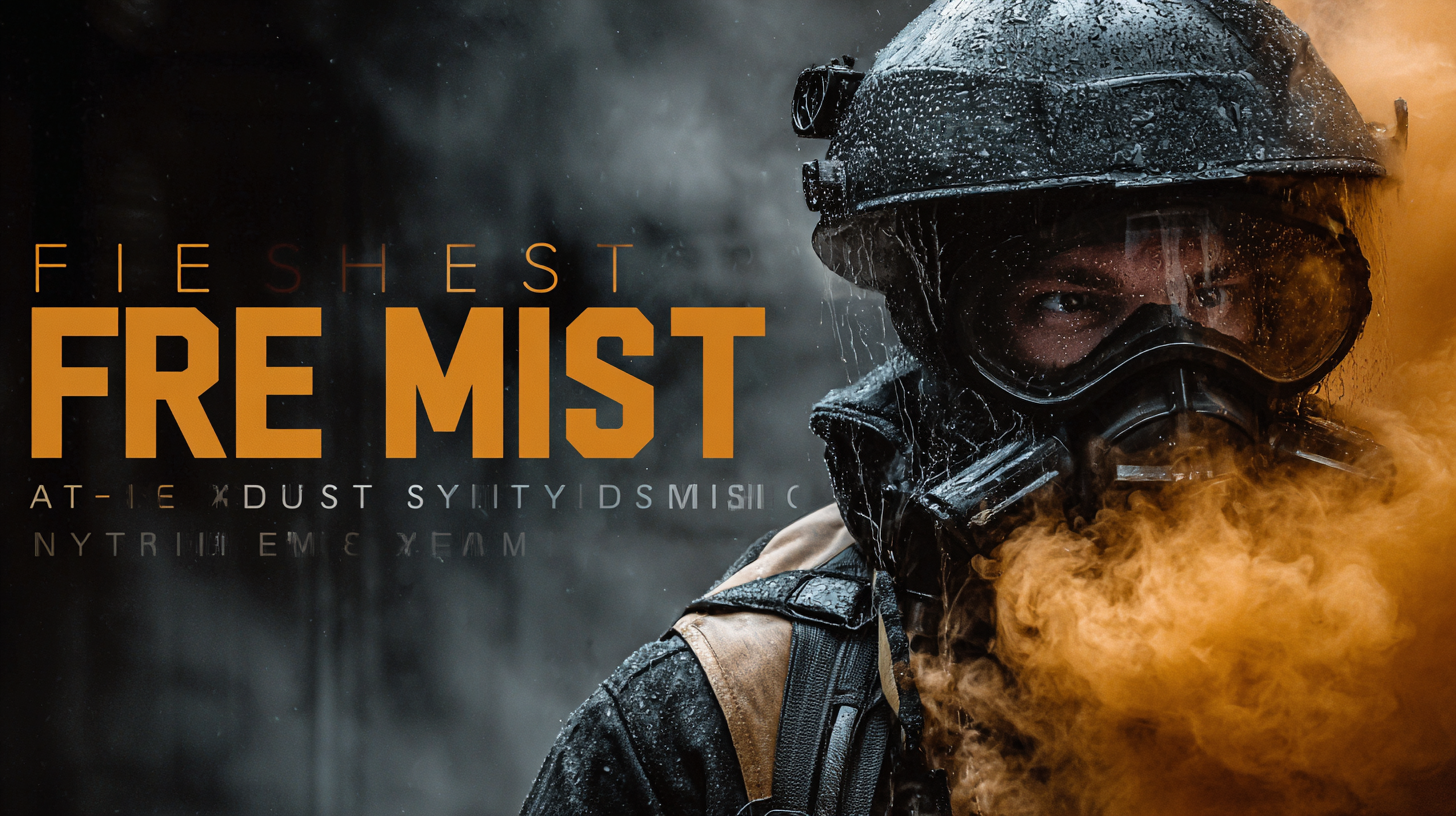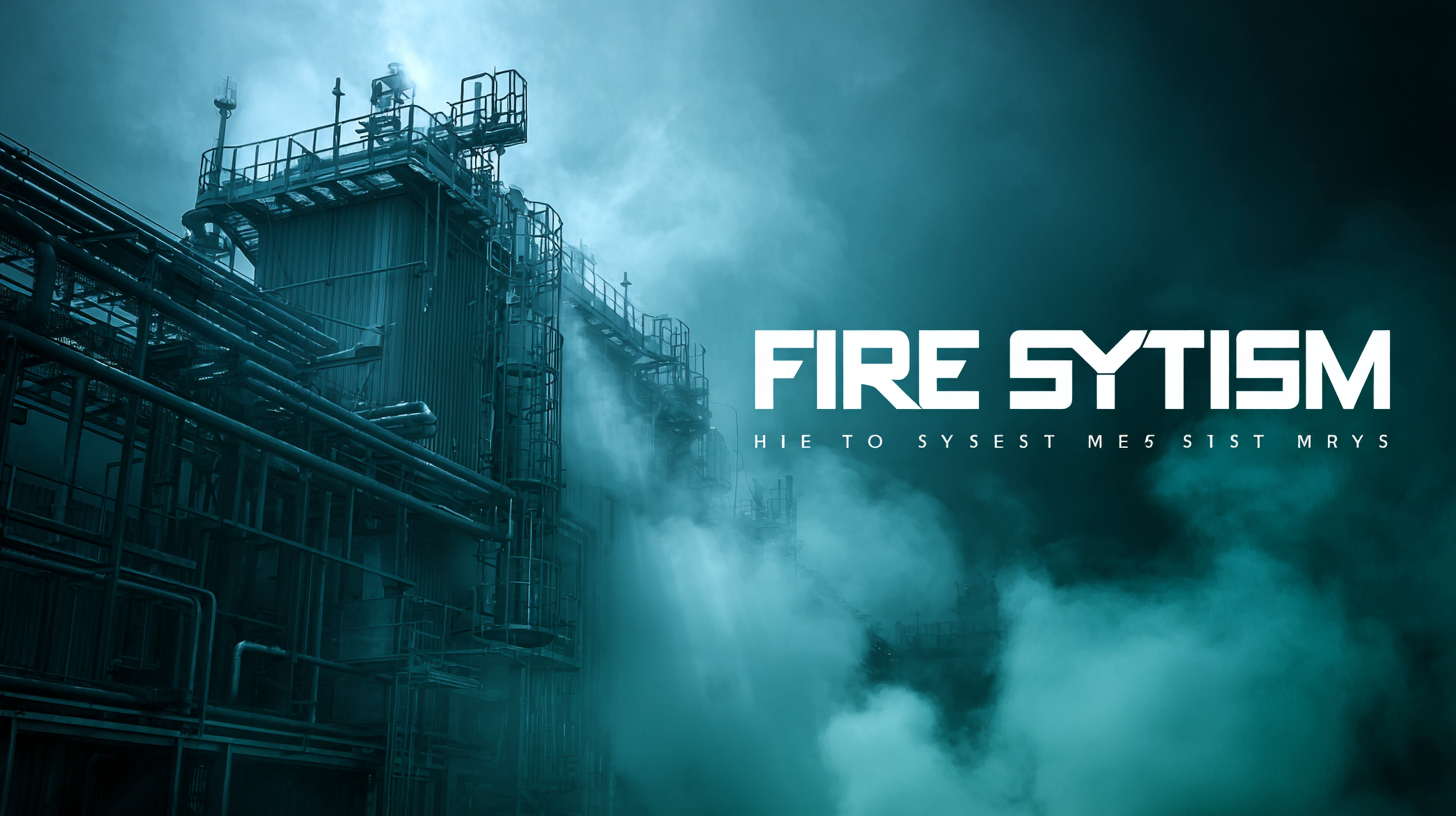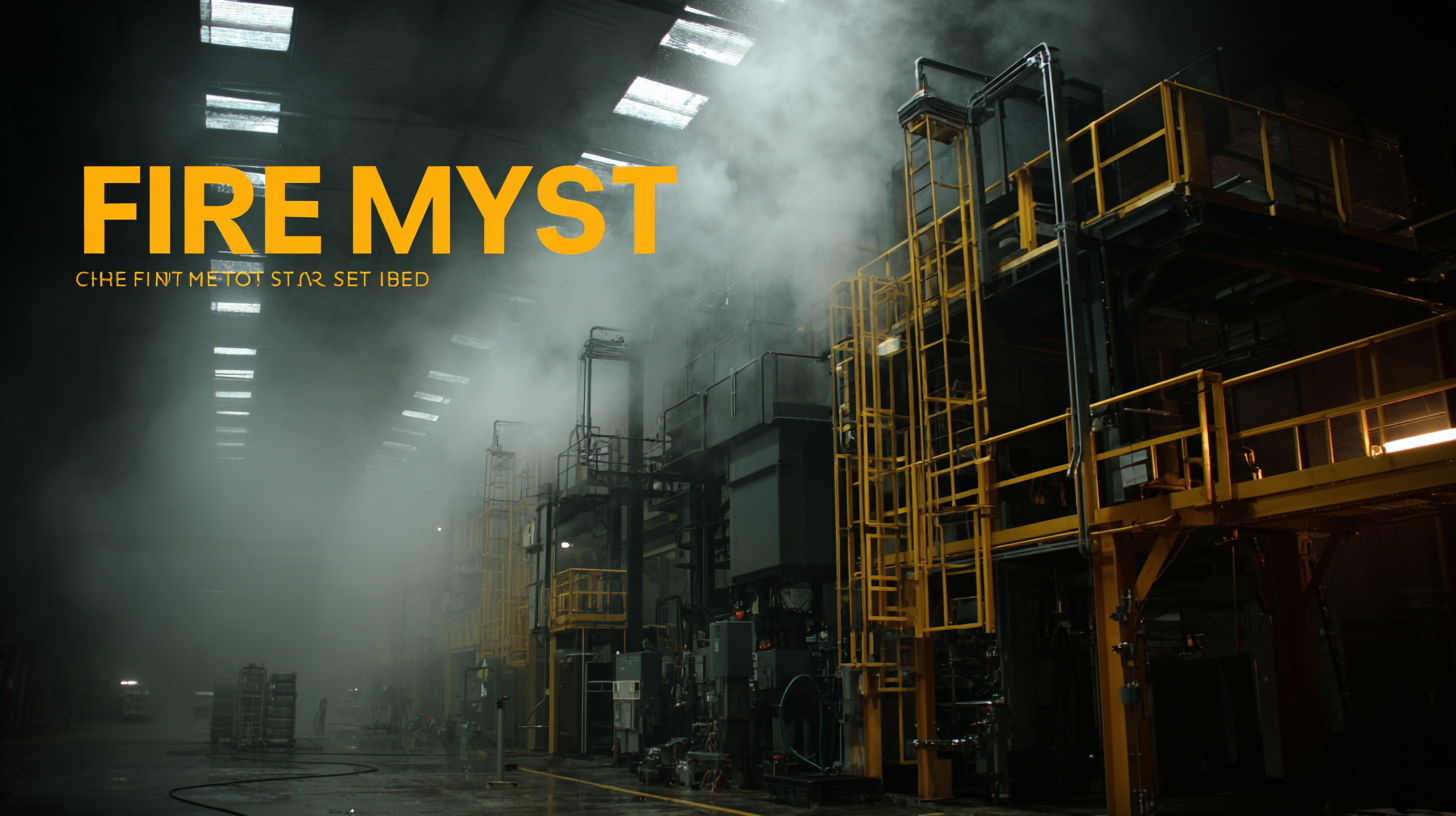How to Choose the Best Fire Mist System for Your Industrial Needs
In today’s industrial landscape, the safety and efficiency of operations are paramount, making the selection of the right fire protection system crucial. A Fire Mist System stands out as a sophisticated solution that combines water mist technology to combat fires while minimizing water damage and providing enhanced safety features. However, with numerous manufacturers and options available, identifying the ideal Fire Mist System tailored to your specific industrial needs can be challenging. This blog will guide you through the essential criteria to look for in a quality manufacturer, along with a comprehensive comparison of available systems in the market. By understanding the core elements that differentiate reputable suppliers and their products, you will be better equipped to make an informed decision that ensures both safety and compliance for your facility.

Identifying Your Industrial Fire Safety Requirements and Standards
When it comes to selecting the best fire mist system for your industrial needs, identifying your specific fire safety requirements and adhering to pertinent standards is crucial. Industrial environments often deal with a variety of flammable materials, making fire safety an imperative concern. Factors such as the type of materials present, the layout of the facility, and local regulations play a significant role in determining the ideal fire protection solution.

The increase in safety regulations and technological advancements is influencing the market for fire detection and alarm systems. As industries strive to meet stringent safety standards, the demand for intelligent, integrated fire safety solutions is on the rise.
Ensuring compliance with these standards not only mitigates risks but also enhances the overall safety of your operations. As your organization assesses its fire safety strategy, investing in a reliable fire mist system tailored to your unique industrial needs can be a key component in maintaining a secure working environment.
Key Features and Technologies in Fire Mist Systems to Consider
When selecting a fire mist system for your industrial needs, it’s crucial to consider several key features and technologies that can significantly impact performance and safety. One of the primary aspects to evaluate is the water mist generation method. Systems can be divided into low, medium, and high pressure. High-pressure systems create finer water droplets, which enhance evaporation and cooling, effectively suppressing flames more rapidly. In contrast, low-pressure systems may be more cost-effective and easier to install but might not be as effective in certain environments.
Another important feature to assess is the nozzle design and distribution pattern. Efficient nozzles ensure optimal coverage and droplet size, which are critical for effective suppression. Additionally, consider systems that integrate advanced detection technologies, such as infrared or smoke detectors, to enhance response times. A proactive approach to fire safety also involves evaluating the adaptability of the system to your facility's specific layout and potential fire hazards, which can further guarantee a tailored solution that meets industry standards and regulations.
How to Choose the Best Fire Mist System for Your Industrial Needs - Key Features and Technologies in Fire Mist Systems to Consider
| Feature | Description | Importance | Technology |
|---|---|---|---|
| Nozzle Design | Types of nozzles (standard, flat fan, etc.) that affect mist distribution. | Critical for effective fire suppression coverage. | Mist generation technology (e.g. atomization). |
| Water Supply | Quality and pressure of water must meet system specifications. | Essential for maintaining optimal performance. | Pump technology (e.g. centrifugal, positive displacement). |
| Control System | Automated controls for system activation and monitoring. | Increases response time in emergencies. | Smart detection technologies (e.g. thermal imaging). |
| Installation Flexibility | Ability to customize system layout to fit various industrial setups. | Critical for maximizing protection across diverse environments. | Modular design technologies. |
| Maintenance Requirements | Frequency and ease of inspections and part replacements. | Ensures long-term reliability and performance. | Self-diagnosing features in modern systems. |
Evaluating Manufacturer Reputation and Industry Experience
When selecting a fire mist system for industrial applications, evaluating the reputation and experience of manufacturers is crucial. A recent report by the National Fire Protection Association (NFPA) indicates that systems from reputable manufacturers have a significantly lower failure rate, directly impacting safety and mitigation strategies. Companies with a proven track record often adhere to stringent industry standards, such as those outlined in NFPA 750, which governs water mist systems. Such adherence not only ensures compliance but also signals to consumers that the manufacturer values quality and reliability.
Additionally, industry experience can provide insights into a manufacturer's ability to innovate and adapt to changing fire safety regulations. According to a survey conducted by the Fire Suppression Research Institute (FSRI), organizations that invest in systems from established manufacturers experience a reduction in incident rates by as much as 30%.
This statistic highlights the correlation between a manufacturer's longevity in the market and their capability to deliver effective fire protection solutions. In a sector where every second counts, the choice of a fire mist system should be based on the manufacturer's established reputation and their extensive experience in the industry.
Comparing Costs and Maintenance for Different Fire Mist Systems
When selecting a fire mist system for industrial applications, understanding costs and maintenance requirements is crucial. The initial investment in a fire mist system can vary significantly depending on the technology and features of the system. High-pressure systems, for example, tend to have a steeper upfront cost due to their advanced components and installation complexity. However, they offer higher efficiency in fire suppression, which may lead to lower long-term costs in terms of insurance and operational downtime. In contrast, low-pressure systems often come with lower installation costs but may require more frequent maintenance checks, affecting their overall cost-effectiveness.
Maintenance plays a vital role in the longevity and efficiency of fire mist systems. Regular inspections and servicing are necessary to ensure that the system functions optimally during emergencies. High-pressure systems often demand specialized knowledge for maintenance, potentially increasing service costs. On the other hand, simpler systems may require less frequent servicing, but neglecting maintenance can lead to significant risks. Therefore, weighing the costs of both installation and ongoing maintenance against the potential risks is essential for making an informed decision for your industrial needs.
Comparison of Fire Mist System Costs and Maintenance for Industrial Use
Understanding Compliance and Certification for Fire Safety Equipment
When selecting the best fire mist system for your industrial needs, understanding compliance and certification for fire safety equipment is critical. Industry reports indicate that over 50% of fire incidents in industrial settings result from inadequate fire protection measures, highlighting the importance of adhering to stringent fire safety regulations. Compliance not only ensures the protection of assets and personnel but also aligns with governmental standards that can prevent costly penalties.

Tip: Always verify that the fire mist system you choose meets national fire safety standards and accreditation requirements. Look for systems that are certified by recognized testing and certification bodies, as this can significantly reduce the risk of fire incidents.
In recent news, there has been a growing focus on fire safety compliance, particularly in Southeast Asia, where new regulations concerning construction materials and equipment are being introduced. It’s essential to stay informed about these developments and integrate the latest safety protocols into your operations. A well-documented compliance strategy assists in mitigating fire risks while ensuring that all installations conform to local laws.
Tip: Regularly audit your equipment and safety measures to ensure they meet updated industry standards and governmental regulations. Engaging with experts in safety compliance can also provide insights into potential gaps in your current fire protection strategy.
